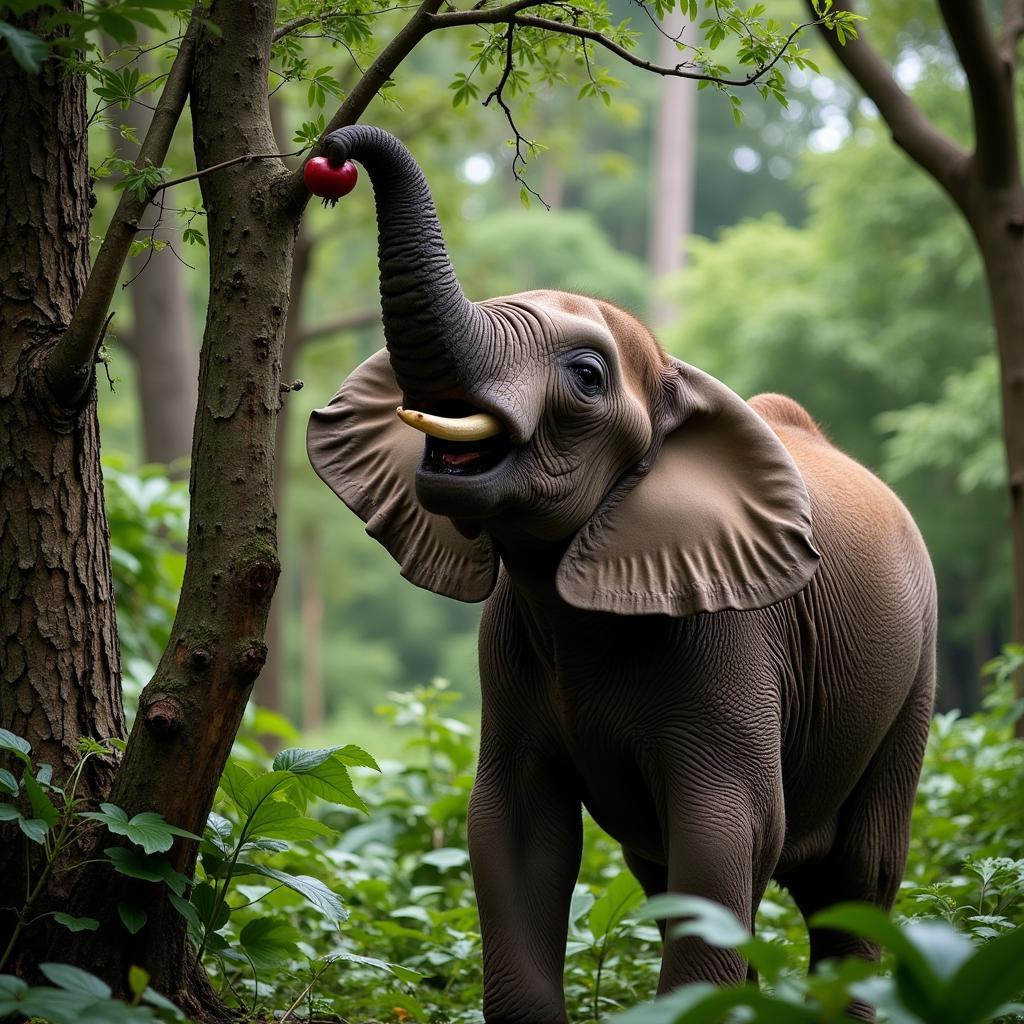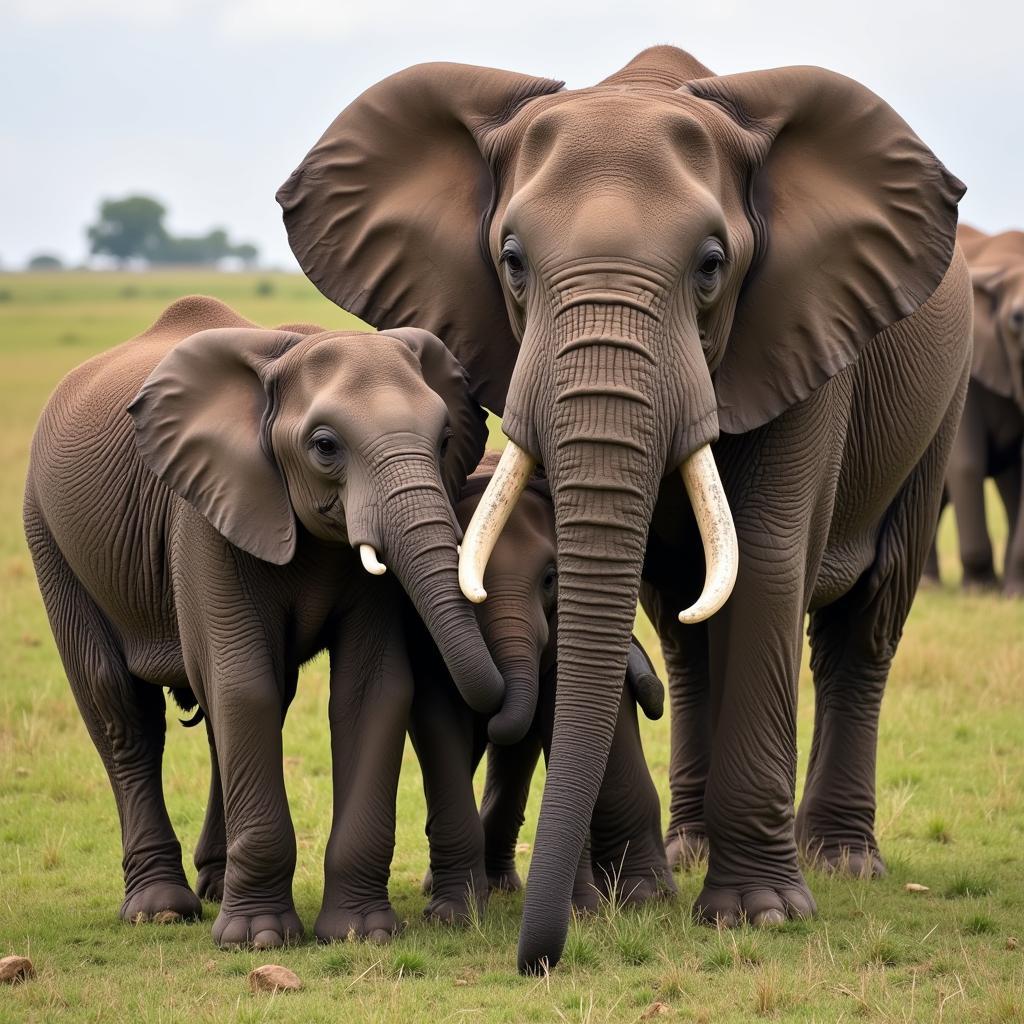African Elephant Information: A Comprehensive Guide
African Elephant Information reveals these magnificent creatures as the largest land animals on Earth. They are essential to the African ecosystem, playing a crucial role in shaping the landscape and supporting biodiversity. This comprehensive guide will delve into the fascinating world of African elephants, covering their biology, behavior, conservation status, and cultural significance.
Understanding African Elephant Species
There are two distinct species of African elephants: the African bush elephant ( Loxodonta africana) and the African forest elephant (Loxodonta cyclotis). While closely related, these two species exhibit distinct physical and behavioral characteristics. Bush elephants are larger and have concave ears, while forest elephants are smaller with straighter tusks and more rounded ears. Their diets also vary slightly, with forest elephants relying more on fruits and leaves found in dense forests. Understanding these differences is crucial for effective conservation efforts.
African bush elephants inhabit a wide range of habitats across sub-Saharan Africa, from savannas and grasslands to deserts and forests. They are highly adaptable and can thrive in diverse environments. In contrast, African forest elephants are primarily found in the dense rainforests of Central and West Africa. The distinct habitats of these two species contribute to their unique physical and behavioral adaptations.
The Importance of African Elephants in the Ecosystem
African elephants are considered keystone species, meaning they play a vital role in maintaining the balance of their ecosystems. They create clearings in forests, which allows sunlight to reach the forest floor and promotes the growth of new vegetation. They also disperse seeds over long distances, contributing to the diversity of plant life. Their feeding habits influence the structure of the landscape, creating pathways and waterholes that benefit other animals. The role of African elephants in their ecosystems underscores the importance of their conservation.
 African Forest Elephant Eating Fruit
African Forest Elephant Eating Fruit
For example, by digging for water during dry seasons, elephants create water sources for other animals. Their dung provides nutrients for the soil and supports a variety of insect life. “The interconnectedness of African elephants with their environment is truly remarkable,” says Dr. Aisha Nkosi, a renowned wildlife biologist specializing in African elephant conservation. “Their presence shapes the entire ecosystem, benefiting countless other species.”
Threats to African Elephant Populations
Sadly, African elephants face numerous threats, primarily due to human activities. Poaching for ivory remains a significant problem, driving down elephant populations in some regions. Habitat loss due to deforestation and expanding human settlements also poses a major challenge. Human-wildlife conflict, where elephants raid crops or damage property, often leads to retaliatory killings. These threats have placed African elephants under immense pressure.
 African Elephant Family
African Elephant Family
Conservation Efforts and the Future of African Elephants
Numerous organizations and governments are working to protect African elephants. Anti-poaching patrols, community-based conservation programs, and efforts to reduce human-wildlife conflict are crucial for ensuring the long-term survival of these magnificent animals. Supporting sustainable tourism initiatives and raising awareness about the importance of elephant conservation are also essential. “The future of African elephants depends on our collective efforts to protect them and their habitats,” adds Dr. Nkosi. “By working together, we can ensure that these iconic animals continue to roam the African landscape for generations to come.” You can find more information regarding the African bush elephant population through dedicated online resources. Learning more about African animal drawings can also deepen your appreciation for these magnificent creatures. You can also explore details about African elephant body parts to further your understanding of their physical adaptations.
Conclusion
African elephant information reveals their crucial role in the African ecosystem and the urgent need for their conservation. By understanding the threats they face and supporting conservation efforts, we can contribute to securing their future. Let’s work together to protect these magnificent creatures and preserve their vital role in the natural world.
FAQ
- What is the difference between African bush elephants and African forest elephants?
- Why are African elephants considered keystone species?
- What are the main threats to African elephant populations?
- What are some effective conservation strategies for African elephants?
- How can I contribute to African elephant conservation?
- Where can I find more African elephant information?
- What is the cultural significance of African elephants?
Scenarios
Scenario 1: You’re planning a safari trip to Africa and want to know the best places to see African elephants in their natural habitat.
Scenario 2: You’re a student researching the impact of habitat loss on African elephant populations.
Scenario 3: You’re interested in supporting an organization dedicated to African elephant conservation.
Further Exploration
Learn more about the rich symbolism of the African bank logo or discover fascinating facts about the African animal with long horns.
If you need assistance, please contact us at Phone Number: +255768904061, Email: kaka.mag@gmail.com or visit us at Mbarali DC Mawindi, Kangaga, Tanzania. We have a 24/7 customer support team.


